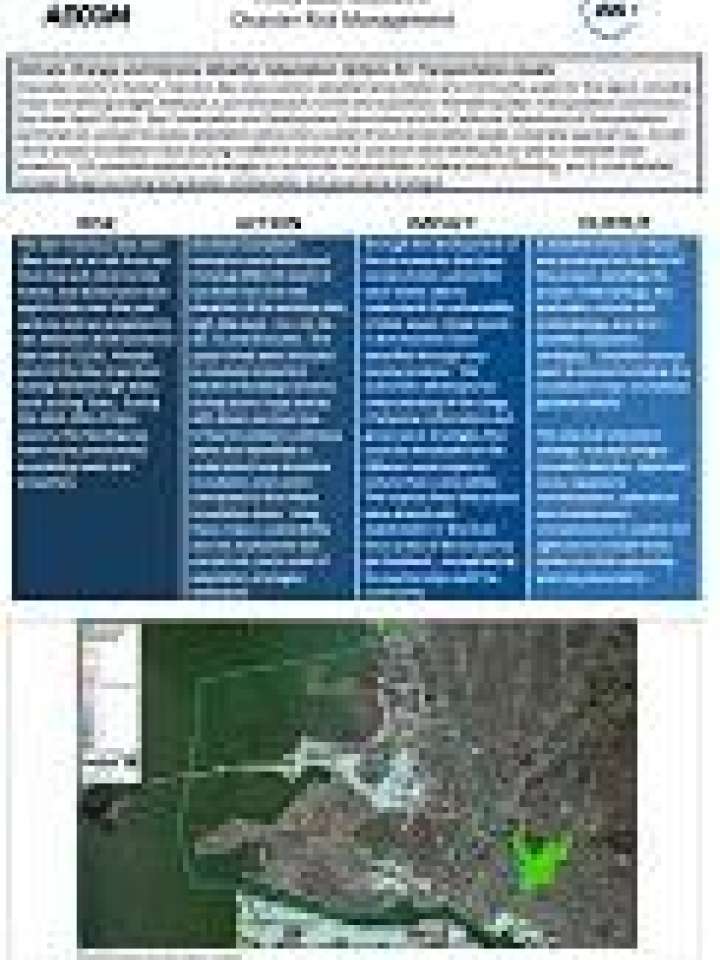United States of America: Climate change and extreme weather adaptation options for transportation assets
Alameda County in the San Francisco Bay Area contains valuable transportation and community assets for the region, including major connecting bridges, freeways, a port and airport, homes and businesses. The Metropolitan Transportation Commission, Bay Area Rapid Transit, Bay Conservation and Development Commission and the California Department of Transportation partnered on a project to assess adaptation options for a subset of key transportation assets vulnerable to sea level rise.
As part of the project inundation maps showing six different sea level rise scenarios were developed, as well as a detailed asset inventory, 125 potential adaptation strategies to reduce the vulnerabilities of these assets to flooding, and five more detailed concept designs including living levees, a breakwater, and governance strategy.
The case study highlights the following lessons learned:
- It can be hard to find detailed asset information that can be useful to inform a vulnerability assessment (such as condition, previous failure, usage) and time can be wasted trying to locate it.
- There is a balance between collecting sufficient data at an early stage to help decide which assets are most vulnerable and at risk, and then once those assets are identified, collecting further data to help develop appropriate adaptation strategies.
This case study is one of a series produced by members of ARISE, the UNISDR Private Sector Alliance for Disaster Resilient Societies.
